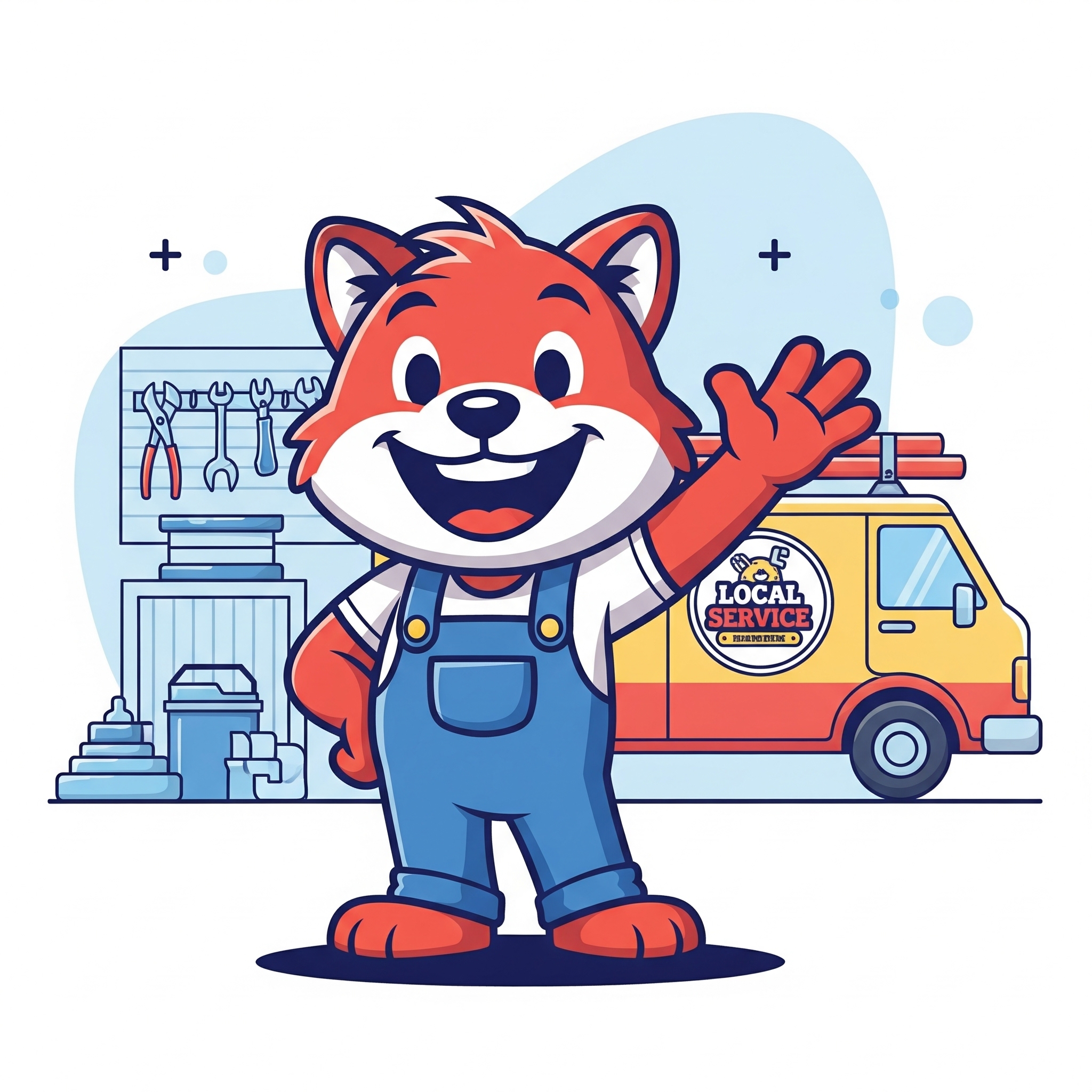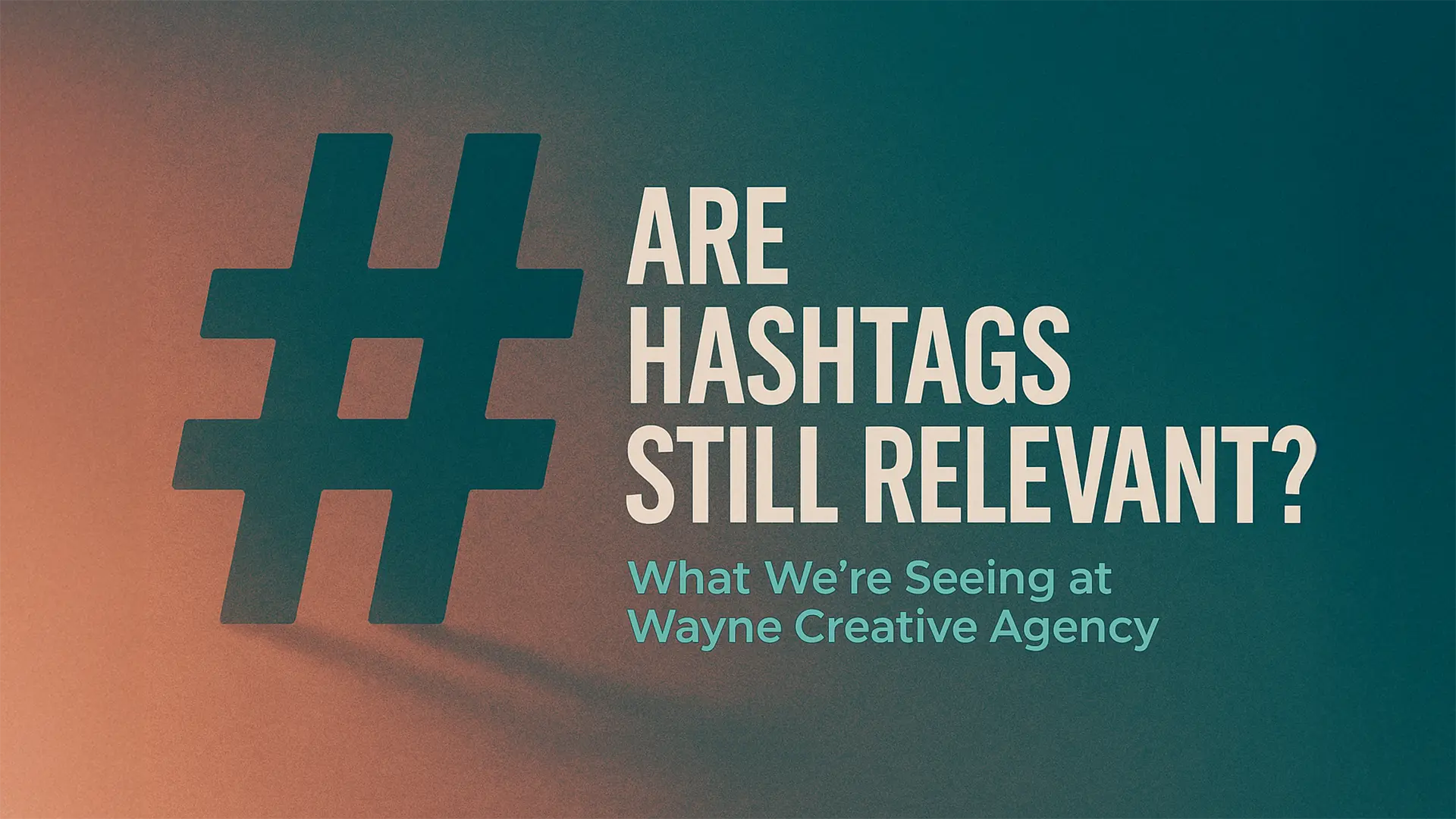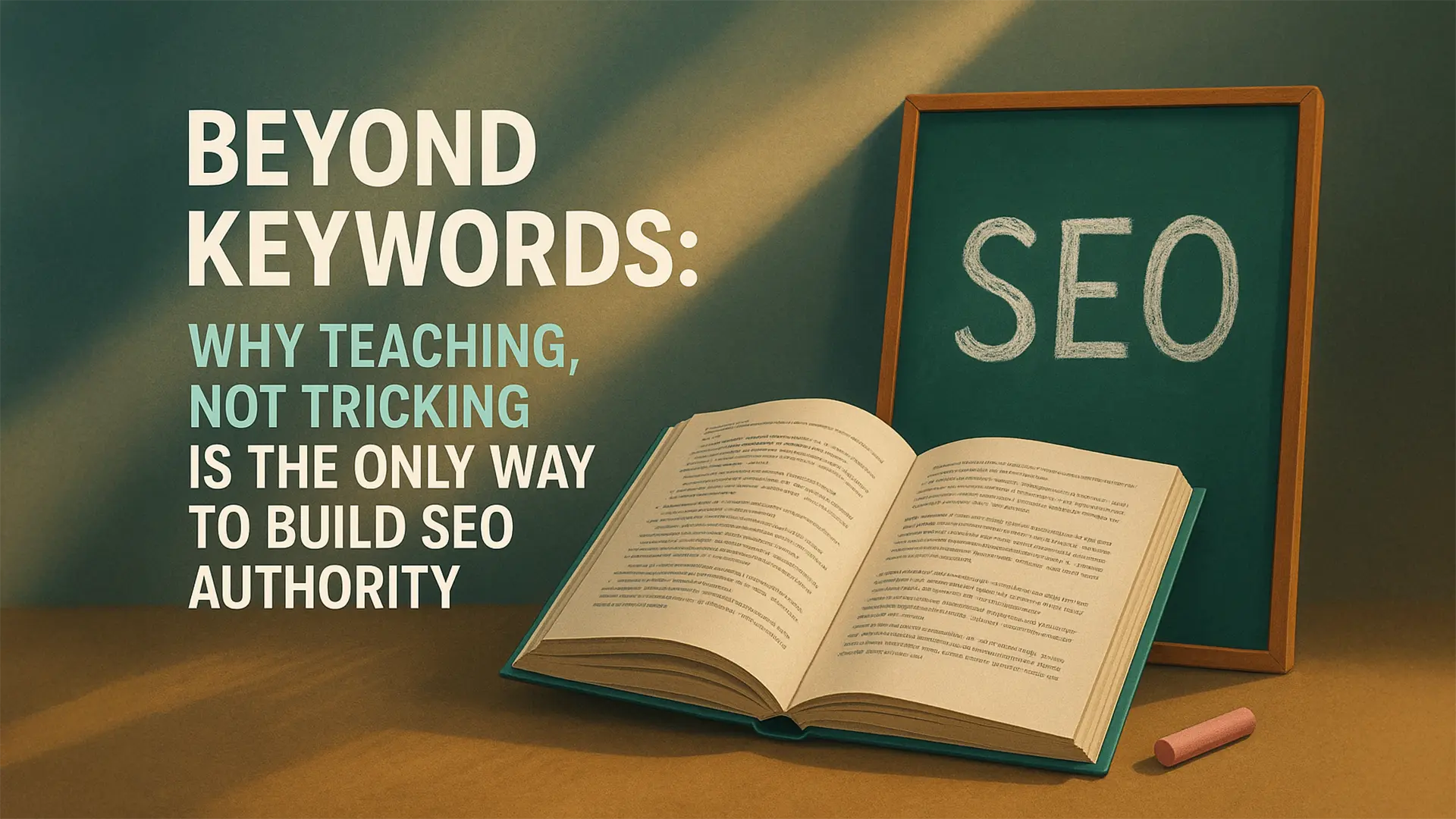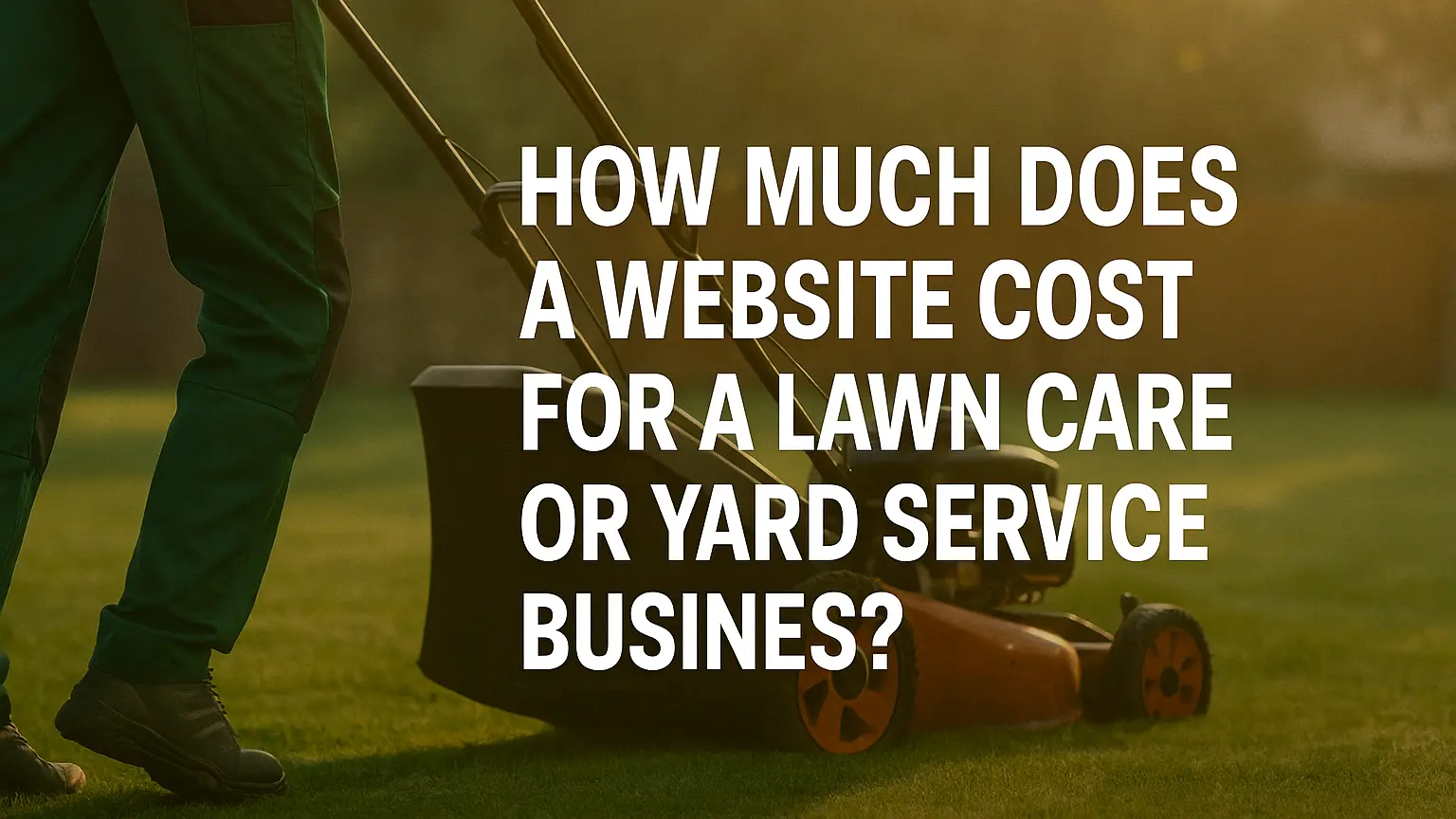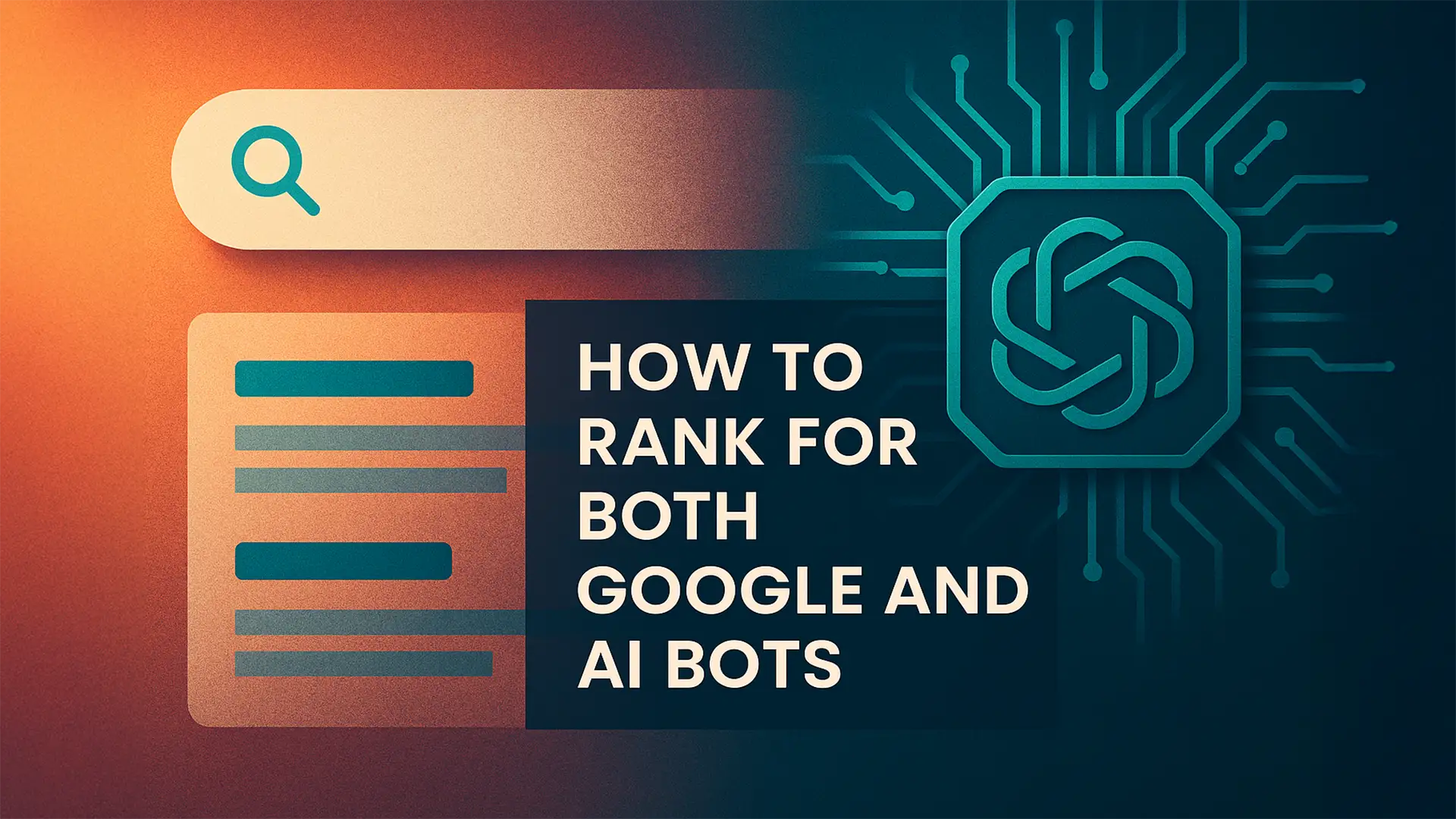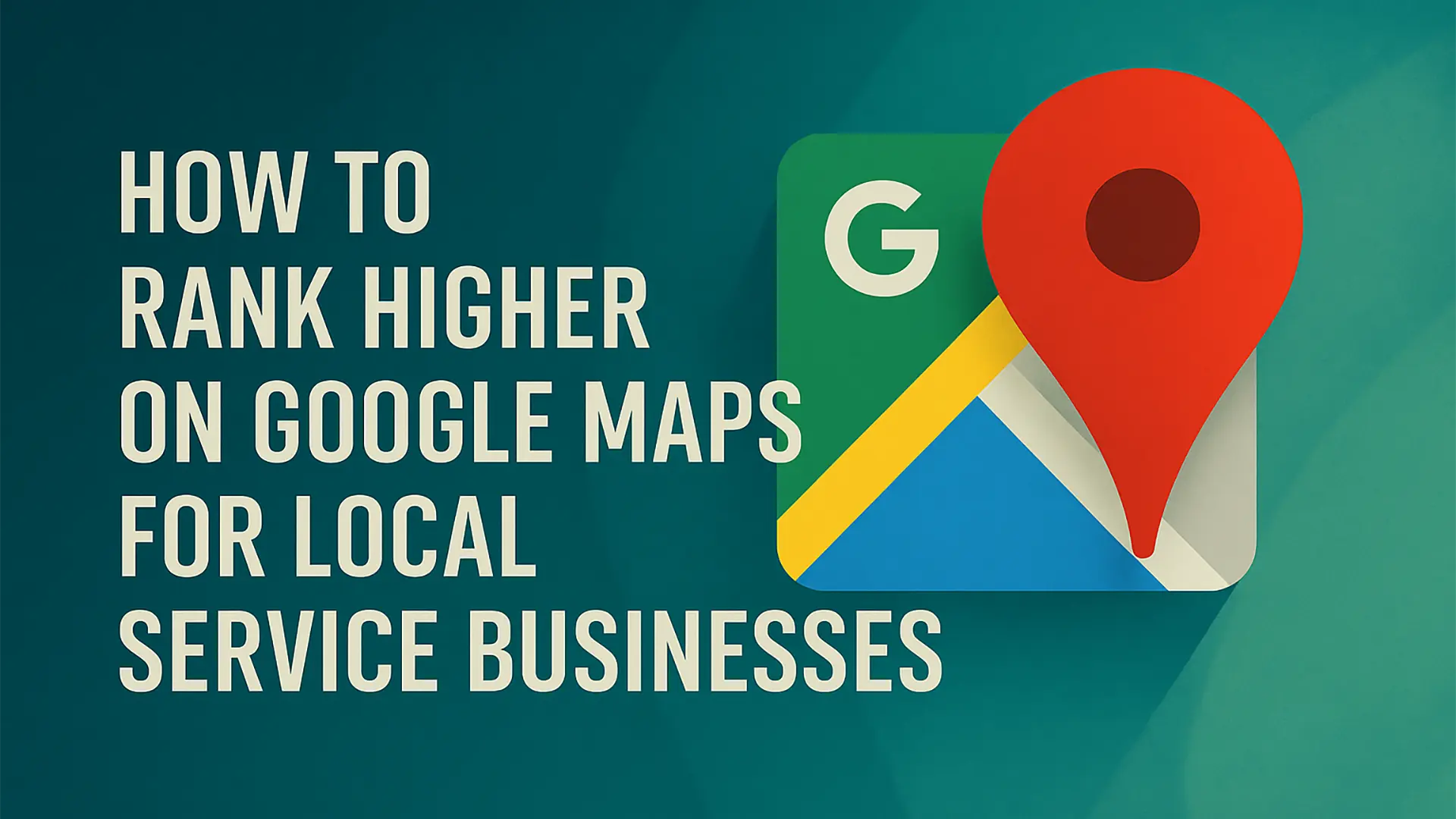Ever notice how some brands just stick with you? Like you see their logo and immediately feel a certain way? Often, there’s a friendly face behind that feeling – a brand mascot! From cheerful tigers to wise old owls, these characters are more than just cute drawings. They’re secret weapons in the world of marketing, helping businesses connect with people on a deeper level.
You might think mascots are just for the big guys, like cereal companies or insurance giants. But guess what? They can be an absolute game-changer for small businesses too, especially if you’re in the service industry – think about your local plumber, auto mechanic, or handyman!
Let’s look into why mascots are so powerful, look at some famous examples (the good and the bad!), and give you clear, actionable advice on whether a mascot could be the next big thing for your small business.
Why Do These Cartoon Characters Work Their Magic Anyway?
At its heart, using a mascot is about psychology. We humans are wired to connect with characters, faces, and stories. Mascots tap right into that. They take a business, which can feel cold and faceless, and turn it into a friendly personality you can relate to.
Think about it:
- They’re Memory Magnets: In today’s noisy world, it’s hard to stand out. Mascots are like mental sticky notes for your brand. They’re much easier to remember than just a logo or a slogan. When you see that character, you instantly remember the business.
- They Build Trust and Loyalty: Imagine a friendly face greeting you every time you see a brand. Over time, this consistent presence builds familiarity and trust. It’s why people feel a connection to characters they’ve “known” for years through ads. In fact, research shows brands with mascots create a 41% stronger emotional connection with customers!
- They’re Master Storytellers: Mascots aren’t just still images. They can star in little stories that show what your business is all about. This makes your brand more engaging and can lead to customers sticking with you for the long haul.
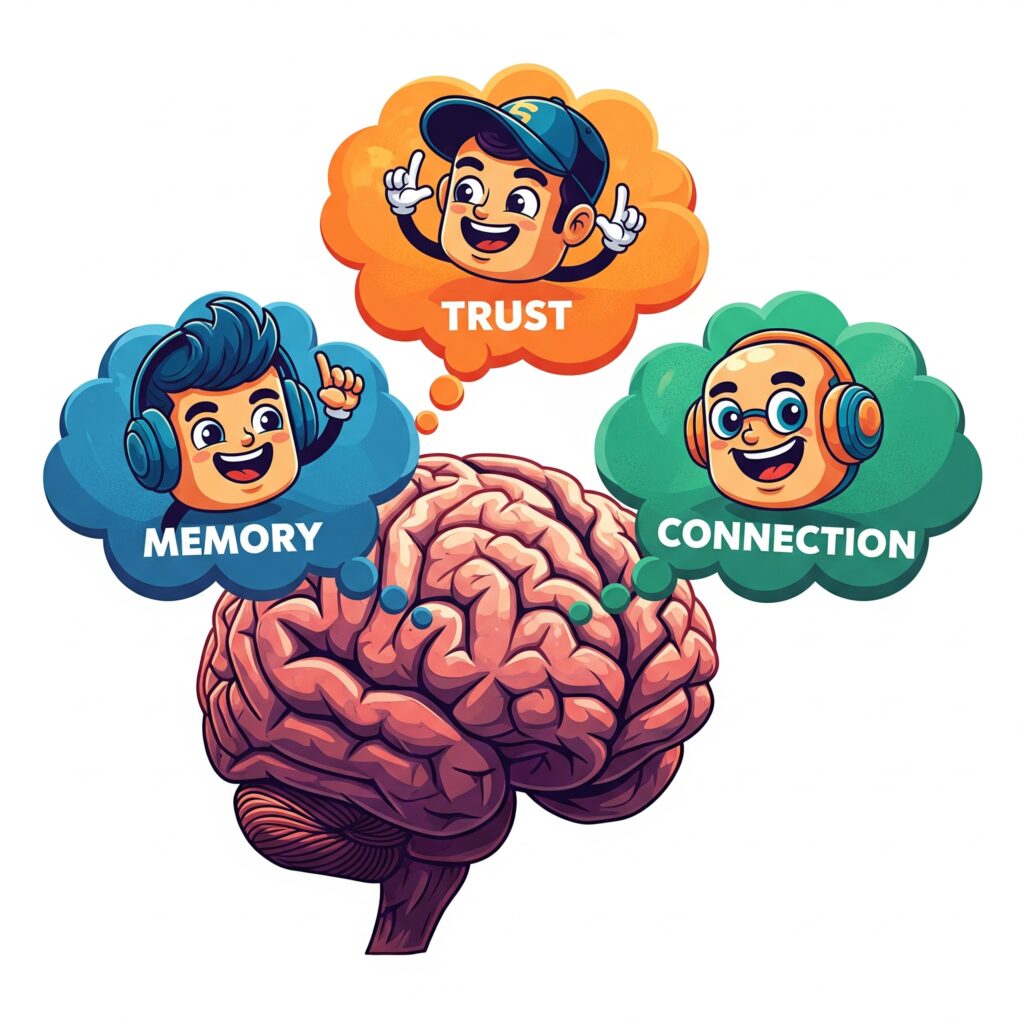
Beyond just remembering your brand, mascots make you remember it fondly. It’s not just about knowing a brand exists, but about feeling good about it, trusting it, and maybe even loving it a little. This emotional bond leads to people choosing your business again and again, and even telling their friends about it. For instance, the trust you feel for the GEICO Gecko is much more valuable than just remembering the name “GEICO.”
And here’s a cool secret: Mascots can actually help your business grow and change over time. They give you a consistent “person” through which you can introduce new services, talk about new trends, or just keep your brand fresh and interesting for years, even decades! Think of them as a dynamic character in an ongoing story you’re telling.
When Giants Get It Right: Famous Mascots and What They Teach Us
Big companies have massive marketing budgets, but their successful mascots teach us universal lessons about connecting with people.
Let’s look at some shining examples:
- Tony the Tiger (Frosted Flakes): Since 1952, Tony has been “Gr-r-great!” He’s full of energy, excitement, and even healthy living. He’s become a part of our culture, showing how a consistent, positive character can build deep loyalty.
- GEICO Gecko (GEICO Insurance): This little lizard is a superstar, especially for a service business like insurance! His charming British accent and easygoing personality are the exact opposite of what you might expect from an insurance company, making GEICO feel friendly and approachable. GEICO keeps him fresh with online videos and social media chats.
- Michelin Man (Michelin Tires): Originally a bit odd in 1894, “Bibendum” has transformed into a lovable, round character made of tires! He perfectly shows off what Michelin sells. He’s also adapted to promote new messages like road safety, proving mascots can evolve.
- Aflac Duck (Aflac Insurance): Quacking his way into our hearts since 1999, this duck helped people remember how to say “Aflac.” His slightly silly, memorable quack quickly made the company famous.
- Other Icons: Think about Mr. Clean (strong and dependable), the Pillsbury Doughboy (lovable and playful), Chester the Cheetah (mischievous), Ronald McDonald (child-friendly joy), and the Energizer Bunny (never quits!).
Many of these mascots have been around for decades! This long life isn’t just luck; it’s because they’ve been consistent and they’ve adapted when needed (like the Michelin Man’s design updates). This means your mascot needs a timeless quality, but also be ready to change a little bit over time to stay current.
A Smart Strategy: The “Surprise Personality”
Notice how mascots for serious businesses often have unexpected personalities? The GEICO Gecko is cheeky for an insurance company. The Aflac Duck is a bit funny and annoying for, well, another insurance company! This is a clever trick: by giving a mascot an unexpected or quirky personality in a usually “boring” industry, the brand really stands out.
Takeaway for Small Businesses: If you’re an auto repair shop, a plumbing service, or an accounting firm, you can use this! Your mascot doesn’t have to be stiff and formal. Injecting a bit of humor, warmth, or a unique personality can make your business far more memorable and approachable than your competitors.
When Mascots Go Wrong: Lessons from the Fails
Not every mascot is a hit. Some have actually hurt brands! It’s crucial to learn from these mistakes:
- Burger King’s “The King”: This mascot was just plain creepy with his blank stare and weird smile. He was described as “frightening and disturbing” – definitely not what you want when trying to attract families for a burger! He actively pushed people away.
- Quiznos Spongmonkeys: These bizarre, singing creatures were supposed to sell sandwiches but were called “revolting” and “soggy rodents.” Their unappetizing look went against everything a food company wants to convey.
- Domino’s “The Noid”: This one is a sad story. The Noid was popular for his “avoid the Noid” fast-delivery ads. But in 1989, a man named Kenneth Noid, who believed the mascot was mocking him, took Domino’s employees hostage. Domino’s immediately pulled the campaign. This shows that even a successful mascot can face unexpected, real-world problems.
- Dairy Queen Lips: Computer-generated lips talking in a man’s voice? People found them “skin-crawling.” Not exactly a sweet treat.
- Charmin Bears: While not a total disaster, their “gag-inducing” depiction of toilet paper remnants was just too much information for a bathroom product.
- Microsoft’s Clippy: This animated paperclip assistant was meant to be helpful but became so annoying with his constant interruptions that users rejoiced when he was retired.
What Makes a Mascot Go Bad?
- Creepy or Unattractive Design: If your mascot looks scary, gross, or just plain weird, people will avoid your brand. There’s a psychological phenomenon called the “uncanny valley,” where things that look almost human but are slightly off can make us feel uneasy or repulsed. A bad mascot doesn’t just fail to attract; it actively pushes people away!
- Inconsistency: Changing your mascot’s look or personality all the time confuses people.
- Insensitivity: Mascots that accidentally offend or alienate certain groups can cause huge damage.
- Ignoring What People Like: If your mascot is irritating or tacky, people will actively try to avoid your ads.
- Not Fitting the Brand: If your mascot doesn’t feel like it belongs with your business’s values, it can seem fake or amateurish.
- Overexposure: Like Clippy, too much of a good thing can become annoying.
- Unforeseen Events: The Domino’s Noid story teaches us that even with perfect planning, real-world events can derail a mascot. You need to be ready to react quickly if something unexpected happens.
Small Business Alert! Because your reputation is so important, especially in your local community, you must invest in professional design and testing for your mascot. A bad mascot can be far more damaging than not having one at all.
The Secret Weapon for Small Businesses
Small businesses often struggle to stand out, especially in local areas. This is where a mascot can be your superpower!
- Your “Game-Changing Difference”: A unique, well-designed mascot can instantly grab attention where a plain logo might just blend in. It can be your single best sales and marketing tool.
- Humanizing Your Business: Small businesses thrive on personal connections. A mascot makes your brand feel more human, friendly, and approachable. This is critical for building trust and stronger customer relationships – studies show mascots can lead to a 23% increase in customer retention and 20% more customer loyalty! Some even report a 41% increase in profits due to emotional connection!
- Super Memorable: Mascots boost brand recall by 37%. People just remember them!
- Makes Complex Things Simple: If your service is a bit complicated, a mascot can help explain it in a fun, easy-to-understand way.
- Social Media Star: Mascots give you endless material for fun, engaging social media posts – far more interesting than just corporate updates!
Different Worlds: Big Budgets vs. Smart Spending
Large companies spend millions on huge national TV ads. Small businesses have to be smarter and more creative. This is where mascots shine! You don’t need a huge budget to make your mascot famous locally. You can use them on your website, social media, email newsletters, and local events. They’re a cost-effective way to get huge visibility and memorability.
The Local Hero: Small businesses are all about community. A mascot can become your local celebrity! Imagine your mascot showing up at a local fair, or popping up in your social media posts talking about community events. This creates genuine goodwill, trust, and a feeling that your business is a true neighbor. This connection is something big national brands can’t easily replicate, giving you a powerful competitive advantage in your neighborhood.
Mascots are a smart investment for small businesses because they give you a consistent, memorable brand asset that you can use across many low-cost channels like social media, employee uniforms, and even on your service vehicles!
Perfect for Service Businesses: Your Auto Mechanic, Plumber, HVAC Tech!
In service industries – like when you need your furnace fixed, your car repaired, or a leaky pipe stopped – trust is everything. You’re buying an intangible promise: reliability, expertise, and peace of mind. Mascots are uniquely suited for this!
- Building Trust: A mascot can make your business feel professional, reliable, and competent, which gives potential customers confidence. They add a friendly, human touch, making your business feel less like a faceless corporation.
- Personifying Expertise: Think of your mascot as embodying your business’s smarts. A “genius” mechanic mascot, for example, can show off your expertise while still being friendly and approachable. This is super helpful in technical fields where jargon can be intimidating. The mascot can be your friendly translator!
- Standing Out Locally: Your auto repair shop probably has a few competitors down the street. A unique mascot helps you differentiate, grab attention, and become instantly recognizable in your town.
- Making the Intangible Tangible: You can’t hold “reliability” in your hand. But a strong, dependable bear mascot for an HVAC company, or a wise owl for a financial advisor, instantly puts a face to these abstract qualities. The mascot becomes the living embodiment of your service promise.
Examples of Mascots for Service Industries:
- GEICO Gecko: Again, a perfect example of humanizing a complex service like insurance.
- Duolingo’s Duo/Zari: While for learning, these characters make a service (language learning) engaging and motivating.
- Home Services (HVAC, Plumbing):
- Mascots can be tools brought to life (a friendly wrench, a spark plug).
- They can be animals tied to your business’s traits (an “Arctic Bear” for an HVAC company to show coolness and trustworthiness, or a “Grasshopper” for energy and approachability).
- It’s a great idea for your mascot’s uniform to match your employees’ uniforms! Think “Cool Willy’s Air & Plumbing” with a laid-back seal in a Hawaiian shirt, or “Arctic Bear Air & Plumbing” with a friendly bear holding a wrench.
- Auto Repair:
- Could be mechanical parts (a “Spark Plug” or “Engine Valve” mascot).
- Could be human or animal characters that show your service qualities (the “Happy Bear” for an alignment shop, or even an “Alligator mechanic”).
- The trick is to be cool and memorable, but still professional and approachable. You don’t want a “too crazy rocker alien hardcore tough guy” mascot if you’re in a more conservative town!
Your small service business is built on local connections. Mascots can make this even stronger by appearing at local events (parades, fairs), interacting on local social media, and being on your uniforms and service trucks. This turns your mascot into a highly visible, trusted “local celebrity” – a level of connection huge brands can’t touch.
Ready to Get a Mascot? Your Step-by-Step Guide!
So, you’re thinking a mascot might be right for you? Fantastic! But don’t just jump in. It needs careful planning.
Phase 1: Plan It Out & Design It Right
This is where you build the foundation for a successful mascot.
- Match Your Mascot to Your Business’s Heart and Your Customers:
- What’s Your Vibe? Are you trustworthy, innovative, playful, serious, adventurous? What’s your business’s personality? Your mascot must truly feel like it belongs to your brand.
- Who Are Your Customers? What do they care about? What feelings do you want them to have when they think of your business? (e.g., joy, trust, security). Your mascot should connect with them.
- What Message Are You Sending? For an auto repair shop, it might be “trust and reliability.” For a home service company, “care and support.” The mascot should clearly show this.
Pro Tip: Instead of just thinking “cute animal,” think: “What specific feeling do I want customers to have when they call my auto repair shop?” (e.g., confident, understood, relieved). Then design a mascot that embodies that feeling. It makes sure your mascot is a real business asset, not just a decoration.
- Make It Original, Simple, and Professionally Designed:
- Be Unique: To truly stand out and protect your brand legally, your mascot must be one-of-a-kind. No generic clip art!
- Keep It Simple: A clean, uncluttered design is easier to remember, even when it’s small (like on your business card).
- Professionalism is a Must: Even if your brand is fun and quirky, your mascot’s design must look professional. A cheap-looking, “cheesy” mascot can actually make your business seem less credible. Invest in a good designer!
- Colors and Expressions Matter: The colors and facial expressions of your mascot can instantly convey warmth, friendliness, expertise, or strength.
Crucial Balance: Your mascot can be fun and friendly, but it must still convey professionalism, especially for service businesses. It needs to subtly communicate competence and reliability. You want “approachable expert,” not “goofy amateur.”
- Choose the Right Type of Mascot:
- Consider different types: human-like characters (like a friendly technician), animal mascots (a strong bear, a speedy hummingbird), or even abstract figures (like a personified spark plug or wrench).
- For service businesses, tools that come alive, or animals known for strength, reliability, or speed, often work well.
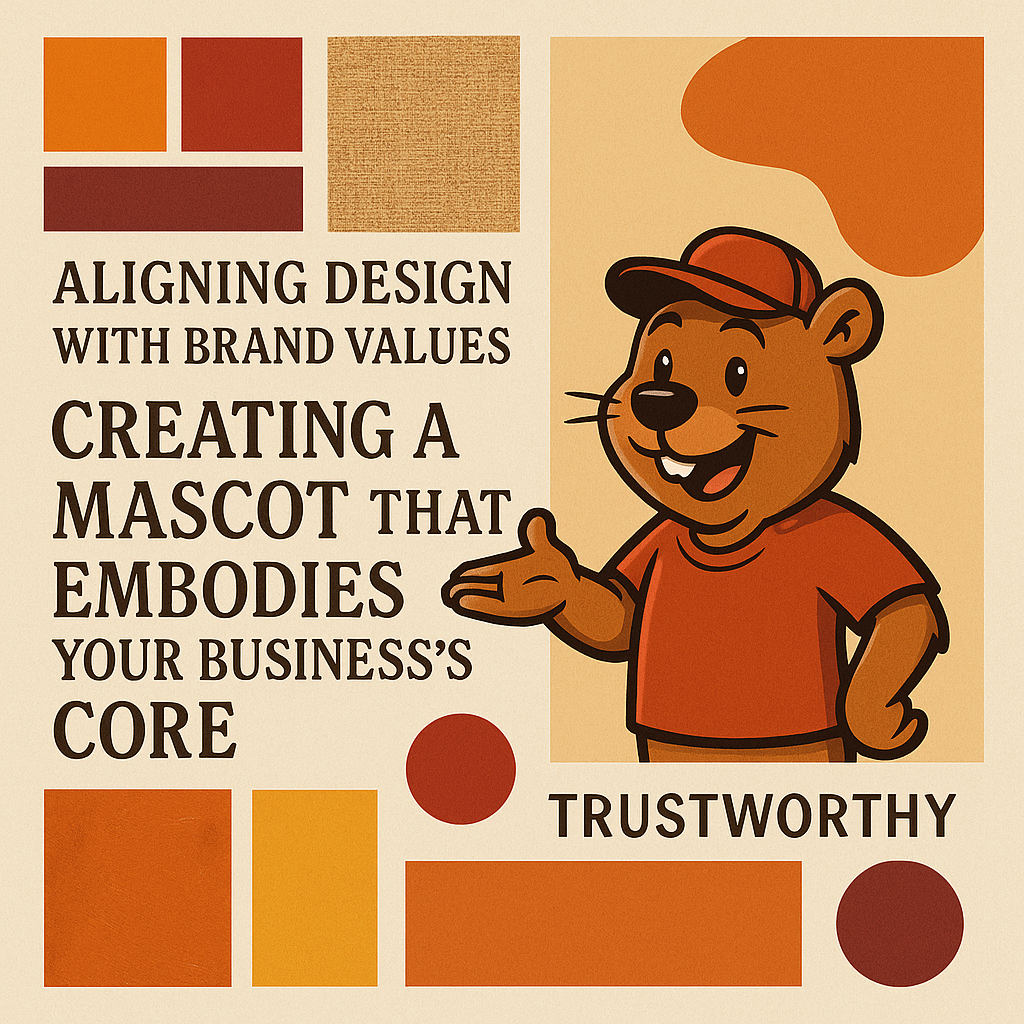
Phase 2: Make It Part of Everything You Do
Once you have your mascot, you need to use it everywhere, all the time!
- Put Your Mascot Everywhere Your Brand Appears:
- Online and Offline: Your website, social media, digital ads, flyers, business cards, uniforms, service vehicles, and signs – your mascot should be on all of them!
- Digital Powerhouse: Mascots are amazing for social media! Use them to create memes, reaction GIFs, and even “ask the mascot” Q&A sessions. This makes your online presence far more engaging.
Consistency is Key: It’s not just about the mascot looking the same everywhere, but its personality staying consistent. The GEICO Gecko always has his cheeky charm. Your mascot’s “voice” (whether it talks or just implies things through its actions) needs to be the same on your business card as it is in an email or at a local event. This builds trust and makes your brand feel solid.
- Give Your Mascot a Story and a Voice:
- Name and Backstory: Give your mascot a name and a cool story. This adds depth and makes them more relatable and memorable.
- Personality Details: What are its likes, dislikes, age, and interests? How does it talk and act? Define its “voice” in communications.
- Stay in Character: Always make sure your mascot acts and speaks consistently. Any change can confuse people and weaken your brand’s message.
Beyond Just a Logo: Your mascot can be an active storyteller! Use it to announce new services, give helpful seasonal tips, share local news, or even show a “behind-the-scenes” peek at your business. This turns your mascot into an engaging communicator, making everyday info more interesting.
- Think About Bringing Your Mascot to Life (Literally!):
- Costume Fun: If your budget allows, a high-quality mascot costume can be incredible for local events: parades, grand openings, community fairs.
- Interactive Power: A physical mascot can interact with crowds, offer unique photo ops, and participate in holiday promotions.
- Community Builder: This physical presence builds a strong, personal connection and sense of community, which is gold for local service businesses that rely on neighborhood ties and word-of-mouth.
Phase 3: Play the Long Game & Avoid Traps
A mascot isn’t a one-and-done deal. It needs ongoing care to stay effective.
- Evolve (Slowly!) and Stay Timeless:
- Adaptation is Good: While consistency is important, mascots aren’t set in stone. They can change a bit over time to stay current (like the Michelin Man). But these changes must be managed carefully so you don’t lose your core identity.
- Design for the Future: Aim for a mascot design that won’t look dated in a few years. It should have a “timeless” quality.
- Be Culturally Sensitive and Don’t Annoy People:
- Think Before You Create: Make sure your mascot’s design and actions won’t accidentally offend anyone or create negative feelings. Do your homework!
- Don’t Overdo It: Remember Clippy? Don’t make your mascot so omnipresent or pushy that it irritates your customers. Find a good balance in how often and how intensely it interacts.
- Keep an Eye and Ear Out:
- Listen to Feedback: Pay attention to what people are saying about your mascot online and offline. Social media tools can help you track this.
- Be Ready for Anything: Have a plan for how you’d react if your mascot somehow generates negative buzz or, in extreme cases, gets caught up in a public relations crisis (like Domino’s Noid).
Your Mascot as Brand Guardian: Your mascot isn’t just a marketing tool; it’s a protector of your brand’s reputation. Its image and actions directly affect how people see your entire business. For small businesses, where your reputation is often tied to you personally and your standing in the community, this is incredibly important. Treat your mascot’s public image with the same care you would your own!
The Bottom Line: A Smart Investment for Your Business
When done right, a brand mascot can unlock huge potential for your small business. It can make your brand instantly recognizable, build strong emotional bonds with customers, foster loyalty, and give you a unique edge in your competitive local market.
For service businesses like home repair or auto shops, mascots are especially powerful. They humanize services that can feel cold or technical, build essential trust, and make complex topics approachable.
A mascot isn’t a magic wand, but with careful planning, professional design, consistent use, and ongoing care, it can become an incredibly valuable part of your business’s identity and growth strategy. It’s a long-term investment that can pay off big time!
